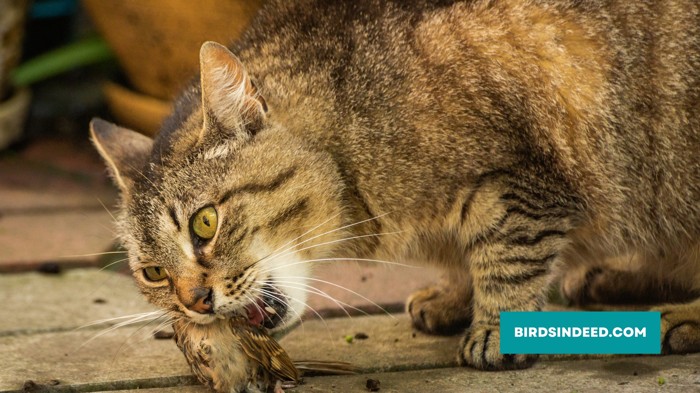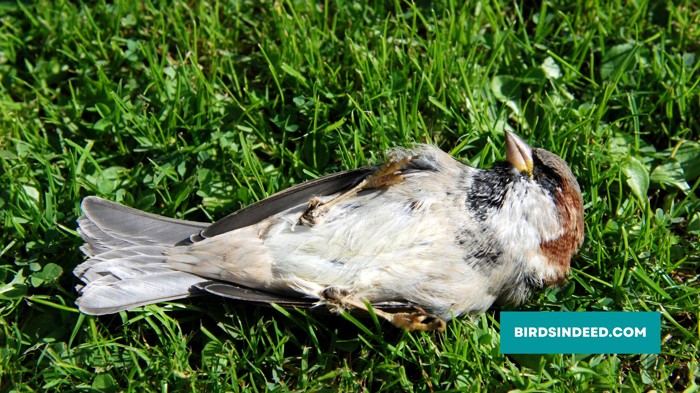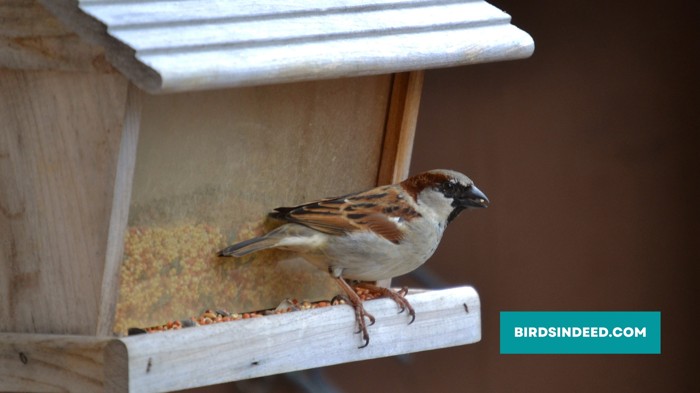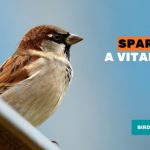Have you ever wondered about the remarkable lives of those tiny, charismatic birds we often spot fluttering about in our surroundings? Yes, we’re talking about sparrows! Despite their small size, sparrows have captivated our attention with their cheerful chirping and playful antics. But have you ever stopped to ponder just how long these delightful creatures can actually live?
Contents
How Long do Sparrows Live?
Sparrows’ lifespans vary, but on average, these beloved birds live between 2 to 5 years in the wild. However, some individuals have been known to exceed a decade, showcasing their resilience and adaptability. Factors such as predation, disease, and environmental conditions can influence their lifespan, making it a fascinating area of study. Today we are going to discuss here the sparrow’s lifespan and the major reason which affects their lifespan.

The lifespan of different species of Sparrows
The lifespan of sparrows can vary depending on the species and their living conditions. While their lifespan is influenced by specific factors, we can provide you with the average lifespan of some common species of sparrows.
- House Sparrow: 3 to 4 years, with some individuals living up to 7 years.
- Tree Sparrow: 3 to 5 years.
- American Tree Sparrow: 3 to 5 years
- White-throated Sparrow: 4 to 6 years
- White-crowned Sparrow: 4 to 6 years
- Chipping Sparrow: 4 to 6 years
- Song Sparrow: 2 to 5 years
- Rocks Sparrows: 2 to 5 years
- Vesper Sparrow: 3 to 5 years
- Saltmarsh Sparrow: 9 years.
Exploring the Common Factors Responsible for the Short Lifespan of Sparrows
To better understand why sparrows have relatively short lifespans, we need to examine the common factors that influence their lives. These factors can range from predation and environmental challenges to disease susceptibility. By exploring these elements, we gain valuable insights into the intricate dynamics that shape the lives of these charming birds. Let’s dive into the world of sparrows and uncover the key factors that contribute to their shorter lifespans.
Predation
When it comes to the impact of predation on sparrows, cats play a significant role. These small birds are vulnerable to predators such as hawks, snakes, and cats. Cats, with their natural hunting instinct, pose a constant threat to sparrows. They can silently stalk their prey, pounce with agility, and launch surprise attacks.

Cats, both domestic and feral, are known for their ability to climb trees and hunt birds like sparrows. The presence of cats in urban, suburban, and rural areas increases the risk for sparrows. Their small size and foraging habits make them easy targets for prowling cats looking for a meal.
The impact of cats on sparrow populations can be significant. Studies have shown that areas with a higher density of outdoor cats often have lower bird populations, including sparrows. This loss of sparrows disrupts local ecosystems, affecting the balance of bird species and ecological services they provide, such as seed dispersal and insect control.
Weather conditions
Weather conditions are another significant factor that can impact the lifespans of sparrows. These small birds are susceptible to the fluctuations and extremes of weather, which can pose challenges to their survival.

Extreme temperatures, whether extremely hot or cold, can put stress on sparrows and affect their overall health and well-being. During heatwaves, sparrows may struggle to find sufficient water sources and shade, leading to dehydration and heat exhaustion. Similarly, severe cold weather can expose them to harsh conditions, making it difficult to find food and shelter.
Disease
Disease is another major cause of death for sparrows. Sparrows, like all wild animals, can fall prey to a variety of diseases. Some common diseases that affect sparrows include avian influenza and West Nile virus. Avian influenza is caused by a virus and can lead to severe respiratory and nervous system symptoms. West Nile virus is transmitted by mosquitoes and can cause severe neurological symptoms. Other common diseases affecting sparrows include salmonellosis, mycoplasmas, and trichomoniasis.
Human-made Hazards
Human-made hazards such as pollution, pesticides, and habitat destruction can also harm sparrow populations. Pollution can contaminate the environment, making it difficult for sparrows to find food and shelter. Pesticides can also have a negative impact on sparrows, they can cause a variety of health problems such as respiratory issues and neurological problems. Habitat destruction can make it difficult for sparrows to find food and shelter and it leads to starvation.
Malnutrition and Starvation
Malnutrition and starvation are also common causes of death for sparrows. Sparrows that are malnourished or unable to find enough food to eat may die of starvation. This can occur due to a lack of food in the environment or due to competition with other animals for food.

Injuries
Injuries can have a significant impact on the lifespan of sparrows. Whether it’s collisions with structures or windows, territorial disputes among males, or encounters with predators, injuries can greatly hinder their ability to survive. Sparrows with injuries may struggle to fly, find food, or escape from danger, making them more vulnerable to further harm and reducing their overall lifespan. Taking steps to prevent injuries, such as creating bird-friendly environments and raising awareness about potential risks, is essential for safeguarding the well-being and longevity of these charming birds.

Captivity
Sparrows in captivity can suffer from lack of space, improper diet, and lack of stimulation which can lead to death. It’s worth noting that sparrows have high reproductive rates and they can compensate for their death rate by reproducing more, so their populations don’t decline easily.
Reflective Surfaces & Building Design
Sparrows are attracted to reflective surfaces, such as windows, which they mistake for other birds or the open sky. This can lead to collisions with the glass. Along with that, tall and large buildings with many windows can lead to an increased risk of collisions, as sparrows are more likely to fly into them.
But it is also true that sparrows have high reproductive rates and they can compensate for their death rate by reproducing more, so their populations don’t decline easily.
Major Death Reasons of Different Species of Sparrows
Predation, disease, weather conditions, human-made hazards, and malnutrition are the basic reasons for sparrows’ death which we already discussed in the previous section. Now below we try to show you some major death reasons for different species of sparrows through a table. This table is based on studies and research and may not be entirely accurate.
| Sparrow Species | Major Reason for Their Short Lifespan |
| House Sparrow | Hunting by humans, Contaminated environment, predators, and disease. |
| Tree Sparrow | Weather conditions, Hunting by humans, and Malnutrition. |
| Saltmarsh Sparrow | Global warming, sea level rises, and loss of habitats. |
| Black-throated Sparrow | Habitat loss, Outdoor cats, and insecticides. |
| White-throated Sparrow | Outdoor cats and window collisions. |
| Song Sparrow | Insecticides, predators attack, window collision. |
| Grasshopper Sparrows | Brood parasitism by cowbirds, pesticides, habitat loss in winter. |
| Vesper Sparrow | Use of pesticides, Loss of habitats. |
| Eurasian Tree Sparrows | Outdoor breaks, Outdoor cats, Contaminated ecosystem. |
How Can We Save Sparrows?
However, in recent years, their populations have been in decline due to a variety of factors. To help save sparrows, there are several things we can do:
Provide Food and Nesting Sites: Sparrows need a source of food and a place to nest to survive. You can help by putting up bird feeders and nest boxes in your garden. Bird feeders should be filled with a variety of seeds such as sunflower seeds, millet, and Nyjer (black seeds of the American daisy). Nest boxes should be placed in a quiet and secluded area, and made of wood or another natural material to provide insulation and shelter.

Avoid Pesticides: Pesticides can harm sparrows and other birds. These chemicals can be ingested or absorbed through the skin, causing death or illness. Avoid using pesticides in your garden; instead, opt for natural pest control methods such as companion planting or handpicking pests.
Plant Native Plants: Sparrows and other birds are more likely to thrive in an environment that supports their natural food sources. By planting native plants in your garden, you can provide food and shelter for sparrows. Native plants also provide a better habitat for other wildlife, insects, and beneficial microorganisms.
Support Conservation Efforts: Many organizations are working to protect sparrows and other birds. You can support these efforts by volunteering, donating money, or spreading awareness about the importance of conservation. For example, participate in citizen science programs such as the Great Backyard Bird Count, where you can submit data on bird populations in your area.
Reduce Light Pollution: Sparrows migrate during the night and light pollution can confuse them and lead to disorientation. By reducing the use of lights during nighttime, we can help the sparrows to navigate properly.

It is important to remember that conservation efforts require a long-term commitment and the involvement of individuals, communities, and governments. By taking small actions such as the ones listed above, we can help to preserve sparrow populations and other birds for future generations.
THAT’S ALL, FOLKS!
So, how long do sparrows live? On average, sparrows can live anywhere from 2 to 5 years in the wild. However, with proper care and habitat, captive sparrows have been known to live up to 9 years.
It’s important to note that keeping sparrows as pets is not recommended, as they are wild animals and not suited for captivity. Instead, we should appreciate them in their natural habitat and work to preserve and protect their environment.
Hyeat is the founder of Birds Indeed, a blog dedicated to all things avian. With a passion for birds and a deep understanding of their behavior, Hyeat shares their knowledge and experiences with readers. Join Hyeat on their journey to learn more about the diverse and beautiful world of birds.







